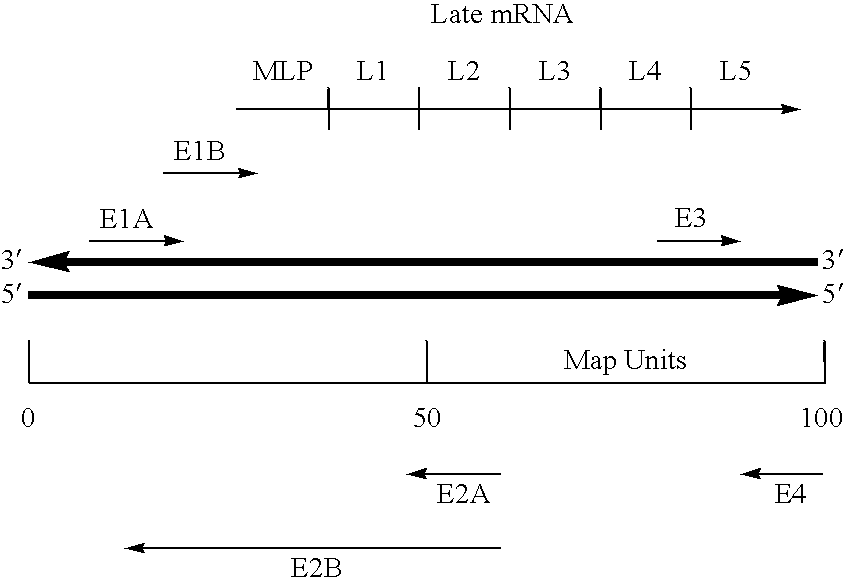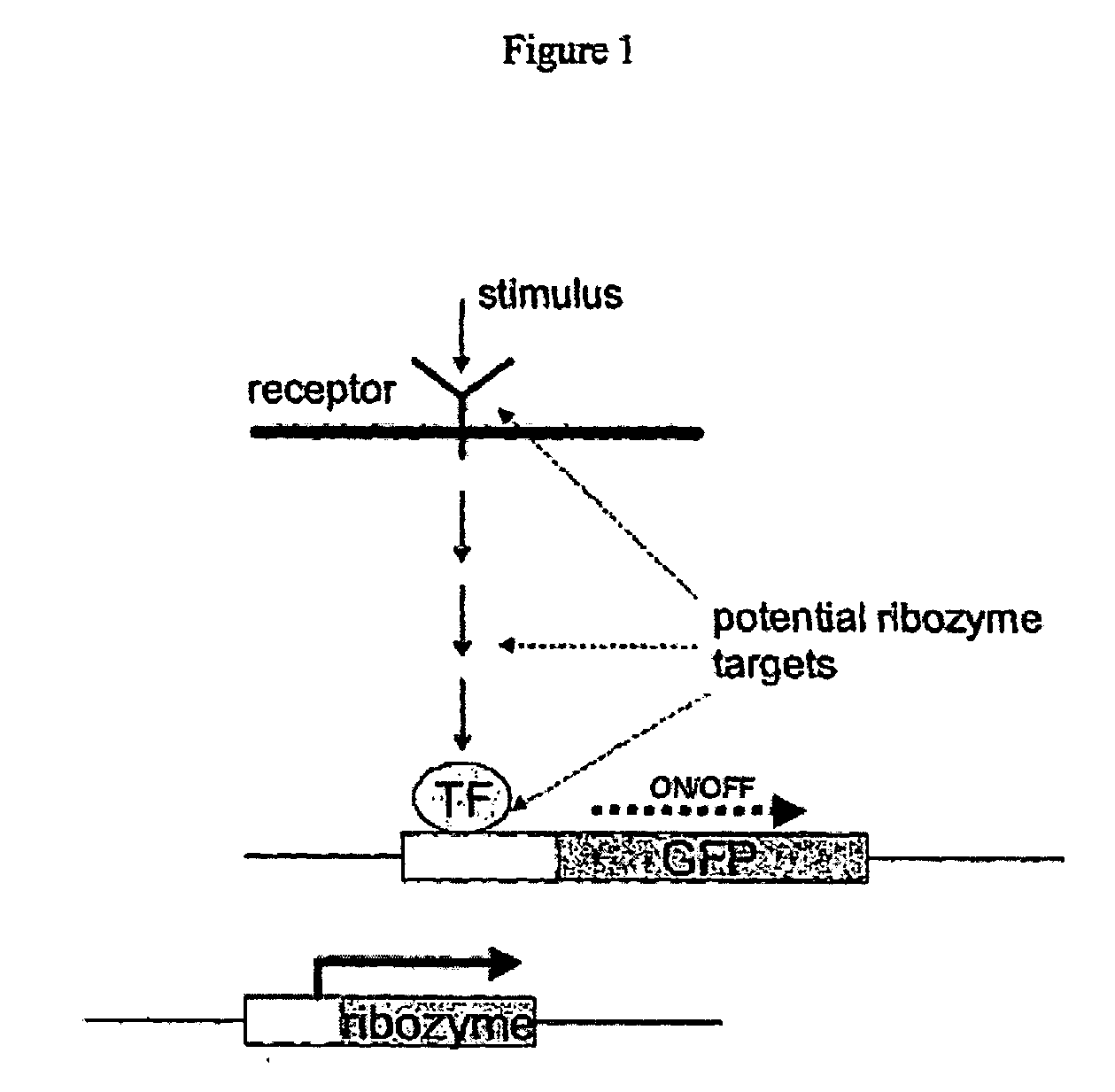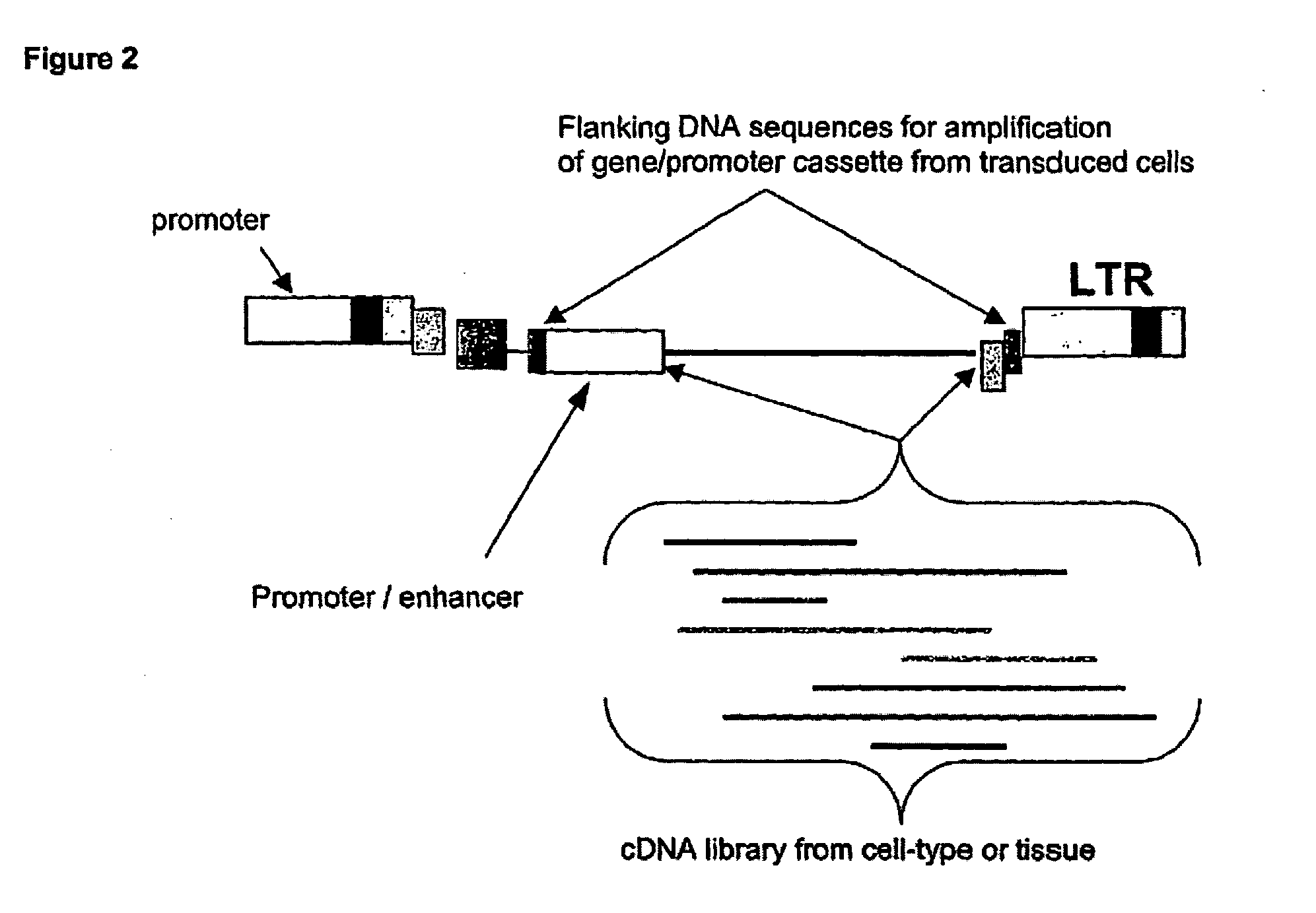Viral vector
a technology of viral particles and vector genomes, applied in the field of viral vector genomes, a production system and viral particles, can solve the problems of inability to consistently and efficiently co-express multiple transgenes, inconsistent results sometimes obtained, etc., and achieve the level of genomic rna available
- Summary
- Abstract
- Description
- Claims
- Application Information
AI Technical Summary
Benefits of technology
Problems solved by technology
Method used
Image
Examples
example 1
Steps in Identifying a Cellular Response Moiety and a Modulating Moiety
[0582] Identify a target gene (use expression profiling) [0583] Identifying a target cell [0584] Introduce a construct comprising a promoter (and enhancer) operably linked to a reporter gene (eg GFP, LNGFR) into the target cell [0585] Culture the cells and identify suitably transduced cells [0586] Transduce the cells with a library of interest [0587] Screen cells under conditions which activate a cellular response pathway and result in a detectable phenotype (eg reporter expression / increase in transcription etc, cell death etc) [0588] Collect cells showing a change in phenotype [0589] Isolate and library insert and amplify [0590] This allows you to identify the cellular response moiety and the modulating moiety [0591] Optionally re-test the modulating moieties
[0592]FIG. 1 is a schematic representation of the method of the present invention.
Step 1=Identification of a Target NOI
[0593] The present invention pro...
example 2
Immortalisation
[0615] A target cell, which may be terminally differentiated or a primary cell of limited proliferative potential (which may also be described as non-dividing or slowly dividing / senescent / quiescent), is transduced with a lentiviral vector encoding an NOI(s) which is able to induce / maintain cell division (immortalisation). The NOI(s) may be one or more ‘immortalising genes’, for example ectopic expression of a combination of human telomerase (hTERT) and a temperature-sensitive mutant of simian virus large-tumour antigen has been shown to conditionally immortalise freshly isolated mammary fibroblasts and endothelial cells (O'Hare, M. J. et al Proc Natl Acad Sci USA (16 Jan. 2001) 98(2):646-51). In the case of an inhibitory protein(s) preventing cell division the NOI(s) may include a ribozyme(s).
[0616] The purpose of this being to reproduce, as closely as possible, the cellular environment in the in vivo situation, whilst facilitating screening of manipulated cells.
[0...
example 3
Identification of Drug Targets and Modulating Moieties Implicated in a Cancer Response Pathway, Such as Breast Cancer
Neu-Ras Pathway
[0622] Breast cancer is the most common malignancy among women. Most of these cancers over-express cyclin D1 (Gillett et al 1994 Cancer Res 54(7):1812-7). In mammary epithelial cells the Neu-Ras pathway is connected to the cell cycle machinery by cyclin D1 (Yu et al 2001 Nature 411(6841):1017-21), which is an absolute requirement for malignant transformation in this tissue. Anti-cyclin D1 therapies are thought to have great potential in treating human breast cancers with activated Neu-Ras pathways. The method of the present invention may be used to identify targets other than cyclin D1 which mediate the Neu-Ras signal causing inappropriate up-regulation of the cyclin D1 promoter.
Prepare a Construct for Introduction into the Target Cell
[0623] Prepare a construct comprising the cyclin D1 promoter operably linked to a reporter gene.
[0624] Cells othe...
PUM
| Property | Measurement | Unit |
|---|---|---|
| concentration | aaaaa | aaaaa |
| concentration | aaaaa | aaaaa |
| nucleic acid sequence | aaaaa | aaaaa |
Abstract
Description
Claims
Application Information
 Login to View More
Login to View More - R&D Engineer
- R&D Manager
- IP Professional
- Industry Leading Data Capabilities
- Powerful AI technology
- Patent DNA Extraction
Browse by: Latest US Patents, China's latest patents, Technical Efficacy Thesaurus, Application Domain, Technology Topic, Popular Technical Reports.
© 2024 PatSnap. All rights reserved.Legal|Privacy policy|Modern Slavery Act Transparency Statement|Sitemap|About US| Contact US: help@patsnap.com










